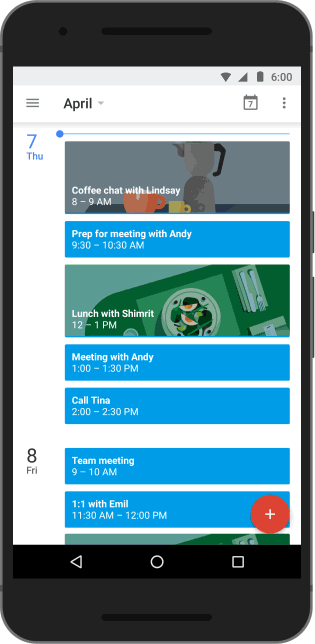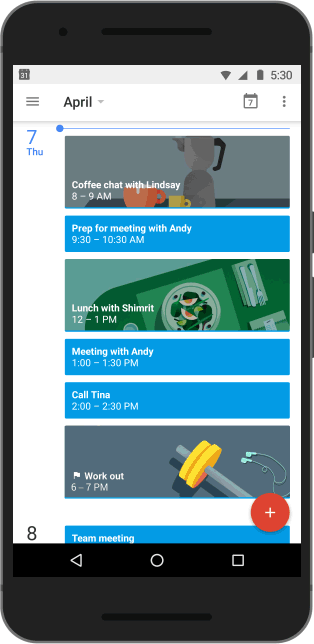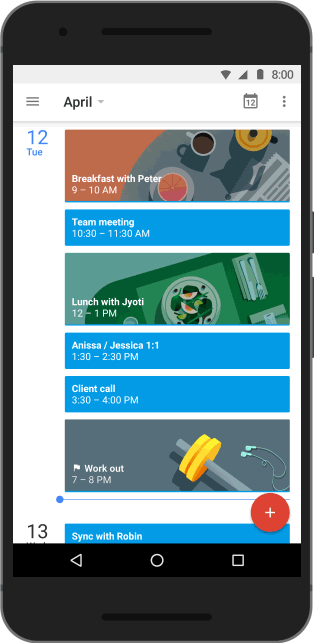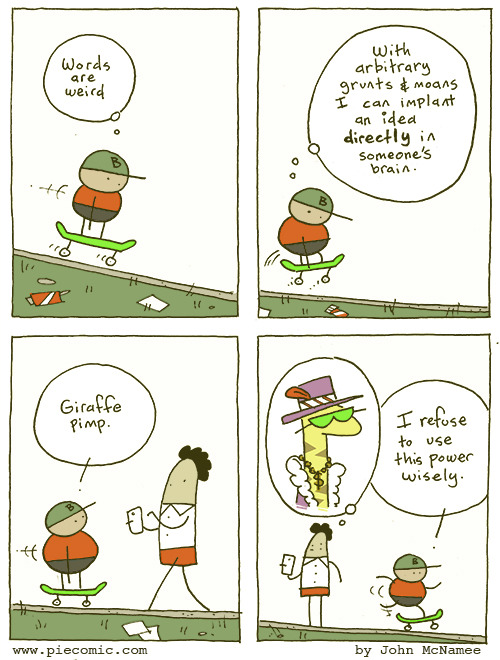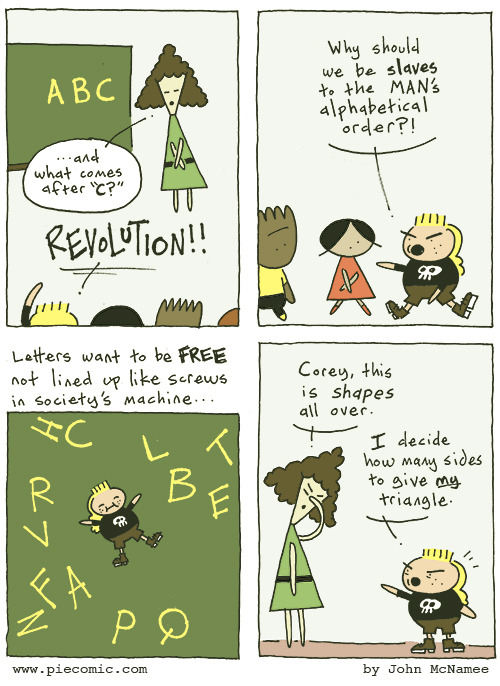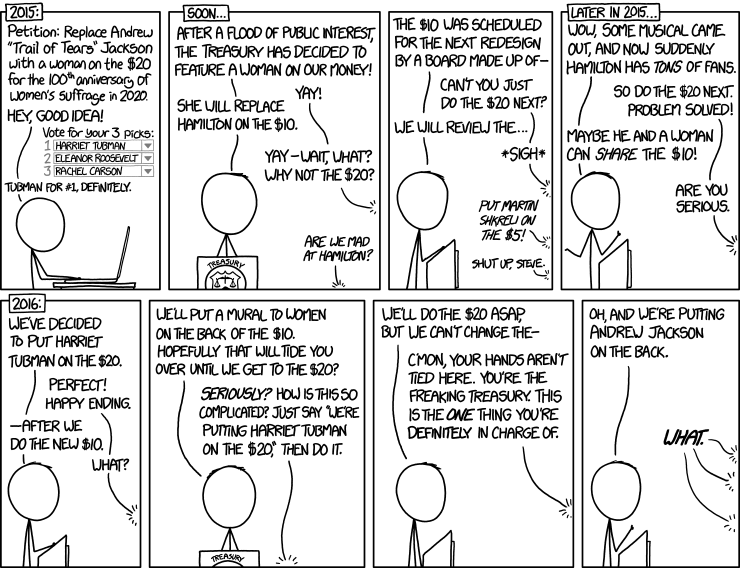
Matthew
Shared posts
Hilariously bad phone number web forms
Stelian Firez recently shared a really boneheaded web form for entering your phone number:
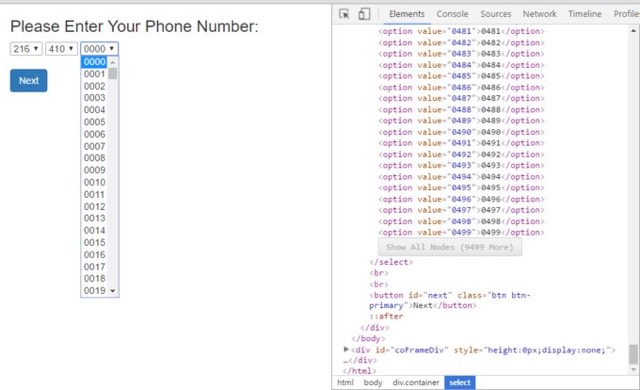
Soon afterward, several people attempted to conjure up even more cumbersome ways to ask people for phone numbers:




"Solutions" by Jeff Bonhag, Paulo Gaspar, Dan Kozikowski, and Justin. (via @ftrain)
Update: Thomas Park went old school with a rotary dial.

“Well that escalated quickly.”
This is the trend line from Google Trends for “Well that escalated quickly.” I know there’s a perfectly good reason for the sudden rise, but I prefer not to know. [via @HPS_Vanessa]
The same goes for this one for Mount Everest:

[Thanks, @PabloMartinezAlmeida]
Tags: Google Trends, humor
Scamper Up the New Bouldering Wall Beneath the Brooklyn Bridge

In recent months, intrepid tourists have been reprimanded for trying to scale the Brooklyn Bridge in pursuit of an epic selfie. For the record: You’re not supposed to sneak up and dangle off of the bridge. But there’s no rule against climbing under it. Now, a sprawling outdoor bouldering facility sandwiched beneath the bridge invites visitors to clamber right on up.
Related Story

Outdoor Gyms Are a Clever Use for Vacant Lots
Free workout spots could help tackle the obesity epidemic, too.
The facility, DUMBO Boulders, opened last weekend. It’s a partnership between Brooklyn Bridge Park and The Cliffs, a company that operates two indoor climbing gyms in Long Island City and Westchester. Unlike other forms of climbing, bouldering does away with harnesses and pulleys. After an orientation and safety lesson, you just jump on the wall. “There’s no real learning curve,” says Mike Wolfert, owner of The Cliffs. “You don’t have to learn the ropes.”
The 12-foot-tall wall—the largest outdoor bouldering structure in North America—was fashioned from stainless steel and fiberglass. Wolfert estimates that the wall can accommodate 50 climbers at a time, with as many as 300 waiting below, plotting their moves.

The installation will be a permanent amenity, but a seasonal one, Wolfert says. They plan to close for the season in November, when it’s “too cold to have your fingers in climbing holes.”
In recent years, a number of cities—Detroit, London, St. Petersburg, Florida—have installed exercise spaces in parks and playgrounds to marry recreation with public health. Wolfert says the new wall does the same thing. “You’re engaging all of your major muscle groups,” he says. Climbing’s not just about using your arms to haul yourself skyward. Instead, Wolfert says, “a good climber uses their legs to hold their body close to the wall.” The $9 entry fee is likely cheaper than a yoga class, but Wolfert says it can confer some of the same benefits. “There’s a lot of crossover with the flexibility and stretched positions,” he says.
And as for those tourists tromping around no-access areas searching for dizzying skyscraper views? The wall is flanked by the Brooklyn and Manhattan Bridges; the Financial District is right across the water. “I don’t think you can get a much better view than that,” Wolfert says. But don’t look so hard that you lose your bearings. “Every time you let go of the wall,” he adds, “you fall and hit the ground.”
How a Simple Graphic Poster Takes a Stand Against Islamophobia

Over the past year, restrictive and discriminatory legislation has proliferated across North Carolina. At the end of March, the HB 2 bill swept aside the state’s laws protecting LGBT residents against discrimination; a bill signed in October by Governor Pat McCrory limited acceptable forms of identification and deregulated police investigations into a person’s immigration status.
Still, messages of acceptance are appearing throughout the state. At the beginning of this year, some local businesses hung graphic posters in their windows, bearing the words “Refugees Are Welcome Here.” Initially posted in response to the anti-immigration bill passed in the state last fall, the messages also resonate in the wake of the more recent discriminatory policies, says Noah Rubin-Blose, a member of the Triangle, North Carolina branch of Jewish Voice for Peace, the national organization behind the posters. In the midst of the refugee crisis playing out across the globe, the signs are especially potent: the artist Micah Bazant based his design for the posters on an image of a Syrian father and child seeking refuge.
The “Refugees are Welcome Here” posters have been showing up in cities across the country since December. After Bazant finished his design in November, the JVP printed and distributed them to their various chapters. But anyone can access and print a poster, Bazant tells CityLab; they’re available for download on the JVP website. “It is everyone’s responsibility to speak out,” Bazant adds. “I hoped to inspire people to connect to the humanity of people driven from their homes—which is really an opportunity to reconnect with our own humanity.”
The JVP chapter in Washington, D.C., posted signs throughout an urban shopping mall, and also went door-to-door offering posters to independent merchants. In Portland, the posters were warmly received: when the city council passed a resolution condemning Islamophobia in December, the posters were on display outside City Hall to illustrate the message, says JVP Portland member Maxine Fookson.
In North Carolina, the response to the posters has been varied. “We’ve had people cry because they’re so moved to see the posters,” Rubin-Blose says. “We’ve also seen them torn down.” In Raleigh, two businesses displaying the refugee poster and another reading “Stop Profiling Muslims” were targeted by protesters. In response, the community has come together, Rubin-Blose says. At the Lucky Tree Café, where a sign was torn down, Raleigh residents organized a “Hangout Against Hate” to show support for both the business and the message of acceptance conveyed by the posters. “Islamophobia is not lessening now,” says Donna Nevel, one of the initiators of JVP's Network Against Islamophobia. “It’s pervasive, and it’s become even more important for us to be as visible as we can in our opposition to it."
While on the surface, the “Refugees Are Welcome Here” posters address one strand of discrimination extant in the country, the message stands in response to so many more issues. “I hope what’s happening now has helped people to see the connection between all of the ways discrimination manifests,” Rubin-Blose says. Posting a sign is a simple act, but “art is one of the most powerful tools we have for inspiring social change,” Bazant says. Just the act of putting the message out there in graphic form, Bazant adds, “can transform the conversation and our sense of what’s possible.”
In San Francisco, Hog a Train Seat and Get a $100 Ticket
Yay us, #SF. @sfbart @bartdiaries pic.twitter.com/a6dUvn5ONA
— Viewer (@PeripateticMe) January 27, 2016
Are you the type of person who, on road trips with family, went ballistic if a sibling crossed the seat’s middle line? Then you’ll probably be thrilled to know the San Francisco Bay Area just made this microaggression a crime on BART, punishable with a $100 ticket for first-time seat hoggers.
Granted, police are supposed to first issue a verbal warning when the so-called “one ticket, one seat” ordinance goes into effect in six months. The new rule also only applies during “commute hours” (weekdays from 6-10 a.m. and 3-7 p.m.), and there are probably going to be exceptions for the disabled and those whose bodies are large enough to warrant a couple seats. But fines are looking harsh for all the other manspreaders, folks with mountains of luggage, and boors who insist on using other seats as footrests—$200 for the second offense and $500 thereafter.
The transit agency says it will spend the next few months developing an enforcement strategy, which is crucial since an earlier effort to pass a seat-hog ordinance cratered without one. A major worry is that the rule will be used to disproportionately target the homeless, as The Chronicle reports:
Officer Keith Garcia, president of the BART Police Officers’ Association, said Thursday he’s fine with the ordinance but that it will result in heavy enforcement against homeless riders.
“Most of these complaints are going to be against the homeless,” he said. “That may cause a backlash.”
[BART Director Joel] Keller said the ordinance will not be used to single out the homeless.
“I think it’s bigger than that,” he said in an earlier interview. “There are homeless people on our trains taking more than one seat, but there are also people with backpacks, with luggage, with other things occupying seats. This is not an effort to target or harass anyone, merely an effort to make seats available.”
H/t SFist
Saturday Morning Breakfast Cereal - Backdoors
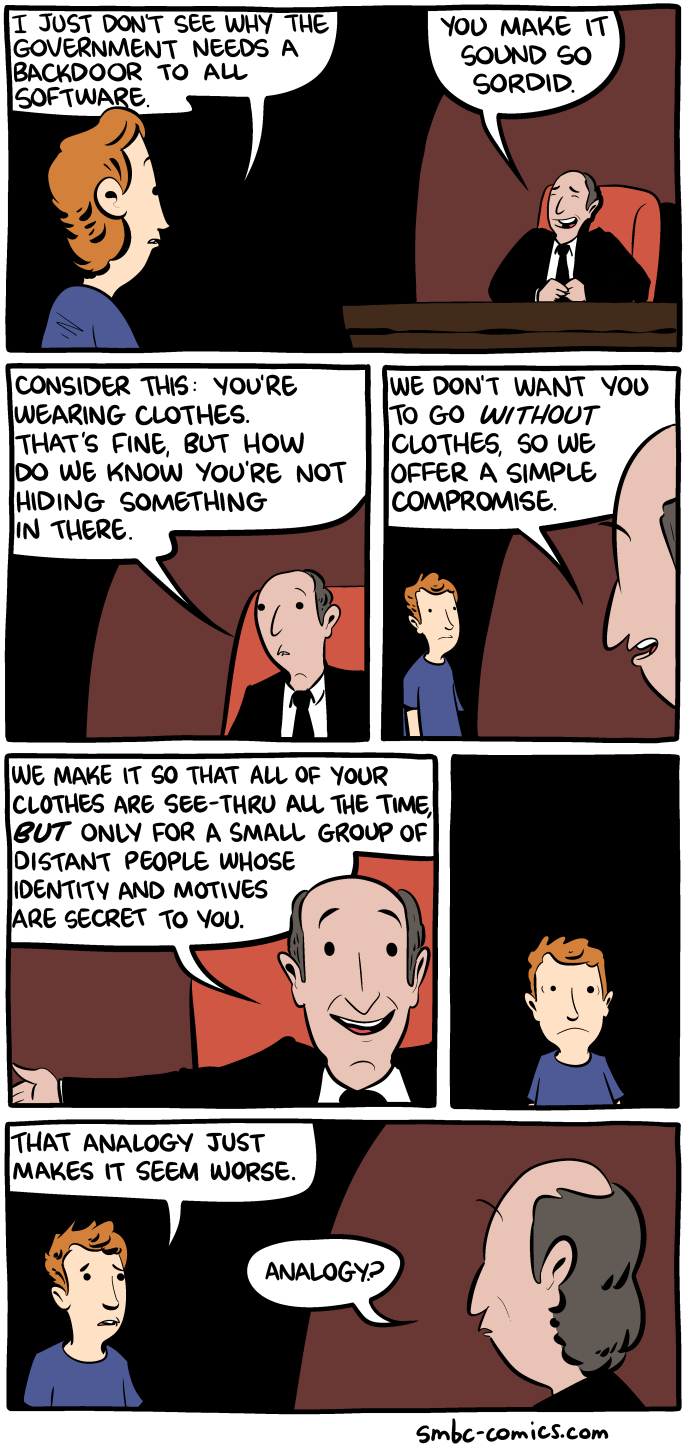
Hovertext: See, the problem is it would also be REALLY COOL if they could do it.
New comic!
Today's News:
IKEA-Style Guides for Eating Like You Know What You're Doing — Food News
Some foods are more intimidating than others, but that doesn't mean you should avoid them! Thanks to these handy how-to guides, it will be a piece of cake to enjoy all the hard-to-eat food you want to eat.
Find time for your goals with Google Calendar
That’s why starting today, we’re introducing Goals in Google Calendar. Just add a personal goal—like “run 3 times a week”—and Calendar will help you find the time and stick to it.
Goals are easy to set up
To set a goal (like “Work out more”), simply answer a few questions (like “How often?” and “Best time?”), and you’re all set. From there Calendar will look at your schedule and find the best windows to pencil in time for that goal.
Goals adjust to your busy life
Goals aren't easy—especially when the unexpected comes up—but Calendar can help you adjust in a number of important ways. For example, Calendar will automatically reschedule if you add another event that's a direct conflict with a goal.
You can also defer a goal at any time, and Calendar will make time for it later.
Finally, Calendar actually gets better at scheduling the more you use it—just defer, edit or complete your goals like normal, and Calendar will choose even better times in the future.
Calendars should help you make the most of your time—not just be tools to track events. So as Google Calendar turns 10 today (🎉), we're excited to invest in more updates like Goals, and to help you find time for everything that matters—from your daily must-dos, to exercising more, to just a little "me time."
To get started, download the Google Calendar app for Android or iPhone, and set your first goal.
Posted by Jyoti Ramnath, Product Manager
https://3.bp.blogspot.com/-lU0tgNyzpzQ/VxUwPjEEjLI/AAAAAAAASNQ/ozR8-C_xTnIOzGqmXkIeZqxxe8Z5XNMwgCLcB/s1600/Calendar_hero.jpg Jyoti Ramnath Product Manager
These Designers Want To Put Rikers Island on the Map

Rikers Island looms large in New York’s imagination. It is home to a notorious complex of prisons, one whose excesses are still being discovered by the media and the courts. Many would like to see the Rikers Island closed forever, or barring that, to at least change the name to something that does not honor a slaveowner.
One group of designers has a different goal for Rikers Island—one that is within reach and, in fact, already at hand. The problem: On the most prominent map of New York City, Rikers Island is a nonentity. The island simply isn’t labeled on Metropolitan Transportation Authority maps inside the New York subway. The solution: Label it. On every map.
“Being so close to LaGuardia [Airport] and the Bronx, it was such a surprising thing for us to find out. Ten thousand people live there [on Rikers Island], and yet it’s not labeled,” Estefanía Acosta de la Peña, one of the designers behind #SeeRikers, tells CityLab “A lot of people can’t even find it on the map.”
Acosta de la Peña, along with Laura Sánchez and Misha Volf—graduate students at Parsons The New School for Design and collaborators in an enterprise called Artifice—came up with a simple correction. For the #SeeRikers project, they designed a sticker that trades on MTA’s familiar “You Are Here” trope to illustrate where Rikers Island is. The project is a guerrilla intervention to fix an oversight on New York’s subway map—and to shine a light on New York’s corrections crisis.
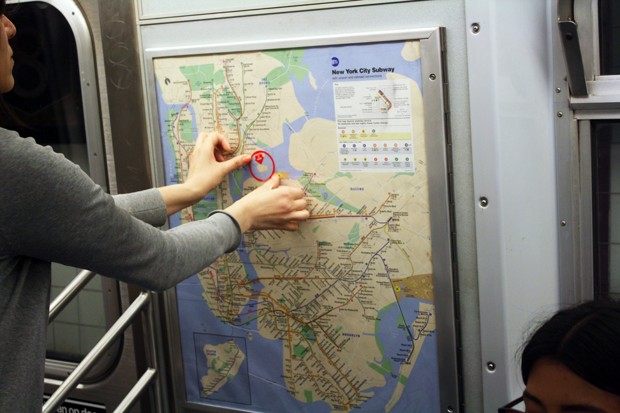
The Artifice designers came up with the concept as part of “Curating Global Dialogue: Incarceration,” a class at The New School. The course serves as the New York local component of the Humanities Action Lab, a coalition of 20 universities working to design new answers to vexing social problems, including mass incarceration. In fact, this week, the Humanities Action Lab is opening “States of Incarceration,” a national exhibition of 20 different projects on prisons from its 20 different partners, at The New School.
Sánchez says that the #SeeRikers project is an example of what the design studies program at The New School is all about: “How can we use design in ways that’s about more than getting people to buy more stuff?”
The team got the idea to appropriate MTA’s own visual language for wayfinding on the subway map right away. Coming up with a self-explanatory prototype was tougher, according to Volf. After all, unlike Randall’s Island, Governors Island, or Roosevelt Island, the landmass for Rikers Island is frequently unlabeled on MTA maps (and always missing on the maps that appear in trains and on platforms).
“Often, people wouldn’t know what to do with [the stickers]. Sometimes people didn’t even know what Rikers was, let alone that it is or isn’t on the map,” Volf says. “We realized we need a very explicit set of instructions.” (The final design prototype incorporates an explanation on the sticker’s back.)

That’s a tricky case for a design intervention: The piece must simultaneously explain the problem and motivate users to do something with the design to fix the problem. When it works, it’s in part due to the strength of the original MTA “You Are Here” platform-map design. Subway riders understand it instinctively.
Acosta de la Peña, Sánchez, and Volf will see a big test of their design on Thursday. That’s the date of the opening for The New School exhibition, at which Venida Browder, mother of Kalief Browder—the 16-year-old boy who killed himself after spending three years on Rikers Island* with no conviction—will be speaking. On the same day, JustLeadershipUSA is hosting a #CloserRikers protest rally on the steps of City Hall.

Sánchez says that people can print their own stickers at home if they like. She adds that the designers haven’t received any feedback from MTA about the project (yet). But all three designers note that the subway maps aren’t the only target of their criticism.
“Of course, we are pointing at the MTA for the omission. But the injustice of making Rikers—and prisons and jails, in general—invisible, goes much beyond the MTA,” Volf says. “We’re pointing at the MTA as much as we’re pointing at the commuters, for participating in making [prisons] invisible, as much as we’re pointing at all of us.”
*Correction: This post originally misstated when Kalief Browder’s suicide took place. It has been corrected.
It Turns Out a Brief Conversation Really Can Change Minds on LGBT Issues
Recently, there has been a spate of state-level attempts to make life harder for transgender people. At the moment, about 7 states are actively debating laws that seek to bar transgender people from using the public bathroom that lines up with the gender they identify with, often under the guise...More »
A Mobile Guide to the Nearest Recycling Bin

In the summer of 2014, Kathryn Hurley, the in-house counsel for a tech company, was walking down a street in New York. It was hot; she’d just finished drinking from a plastic water bottle and was casting around for a place to recycle it.
It took her 15 blocks to find one.
That, she thought, was a problem. At around 15 percent, New York City’s recycling rate has been trailing the national average of 34 percent for years. Even before Mayor Bill de Blasio last year introduced what my colleague Tanvi Misra called his “long overdue” plan to reduce commercial waste disposal 90 percent by 2030, the need for the city to step it up in the environmental impact department was apparent.

Intellibins)
So apparent, in fact, that the September 2014 Google Glass hackathon was based around a mandate from the New York City Economic Development Corporation to develop an app pointing New York toward becoming a more sustainable society. The experience of trying to recycle that water bottle still fresh in her mind, Hurley, along with three other participants, proposed what would become Intellibins, a mobile database of recycling outposts. Her team won the hackathon.
With Google Glass technology stalling, the founders switched gears and released Intellibins as a mobile app in February of this year. For now, it’s available for iOS 7.0 or later, but an Android version is in the works, says Dhanya Bell, the community manager for Intellibins. While apps like Recyclebank incentivize at-home sustainability practices, Intellibins is the first to address recycling on-the-go, Bell adds.
On the app, you select whatever it is you need to recycle—plastic bottles, newspaper, bubble wrap, plastic utensils—from a drop-down menu on the home screen. It’s possible to select more than one at a time; the app will generate a map speckled with color-coded dots signifying the drop-off locations for each item. (These could be street bins, small merchants, or large chain retailers such as Whole Foods.) For some items, like plastic bottles or paper, recycling locations are plentiful; disposing of other materials, like electronics, requires some schlepping.

This is information that’s useful to residents, Bell says, but it’s also something the app’s founders want to bring to the New York City Department of Sanitation as evidence that accessibility needs to be improved if de Blasio’s 90 percent waste reduction goals are to be met. In performing an audit of the DSNY’s list of recycling locations, Bell says the Intellibins team discovered that receptacles are pretty widely available in densely trafficked hubs like Union Square or Times Square, but they’re less frequent in the outer boroughs. Which points to another problem: that recycling options “are just less accessible in the supposedly lower-income areas,” Bell says.
Intellibins aims to overhaul this distribution disparity, and also eventually serve as a catchall for sustainability information for the whole city. Bell says future versions of the app will incorporate an “events” tab that will aggregate initiatives and workshops like the Brooklyn Botanic Garden’s composting education course. They also hope to create versions of the app for cities across the country.
Recycling and sustainable practices, Bell says, “are secondary behaviors.” They’re still relatively new concepts, and as the dots on the Intellibins maps show, they often feel out of reach. Streamlining the info in a single app, Bell says, will “one day make not recycling as taboo as littering.”
Intellibins app, free at iTunes.
How ID Laws Disenfranchise Transgender Voters

Part of the grand short-sightedness of voter ID laws is that they depend upon obsolete notions of fixed identity for participation rights in a democracy premised, in many ways, on changing identities. People change their minds about politics, which is why we have elections every few years. People frequently move, or get evicted, or foreclosed on, and change addresses. Names change when people marry or get divorced. Names and appearances can change when people undergo a gender transition or come to identify as “non binary,” falling somewhere between genders.
None of these changes invalidate people’s eligibility to to cast votes, but voter ID laws certainly make elections tougher for the people experiencing these transitions. And few voters have as much trouble on Election Day in voter ID states than transgender people. The UCLA School of Law’s Williams Institute offers some estimation of those unique burdens in its new report “Voter ID Laws and Their Added Costs for Transgender Voters”:
It may be difficult and costly for a transgender person to obtain photo identification that accurately reflects their gender and appearance after they have transitioned. Updating forms of ID with a change of gender is a unique responsibility that transgender people bear in order to vote in strict photo ID states. The processes involved in updating IDs have costs that impose disparate burdens on transgender Americans who wish to vote in these states. These costs are significant.
It’s hard to put a number on what those costs are. Every state has different rules on updating names and gender markers on IDs, every voter ID state has different rules on what acceptable ID is, and even those rules vary within counties. Unlike cisgender voters—people whose gender presentation matches accepted standards of the sex they were assigned at birth—who are just changing an address or last name after marriage, transgender people must find a physician who will write a letter verifying their gender identity in order to change the gender marker on most accepted ID.
This is a letter many physicians will write only under certain conditions, such as when a patient opts for gender-affirming surgery. Many transgender people, however, choose not to have invasive surgery, for a range of personal, medical, and financial reasons. Yet this is part of the criteria that some states—including Alabama, Mississippi, and Georgia—have for allowing a person to change the gender marker on their license.

Assuming a person even desires gender-affirming surgery, it certainly isn’t cheap, even if you have health insurance. All of those medical expenses get added to the base costs of changing or updating government-issued ID cards, which, as seen in the table above, can range from $11 to upwards of $50. For new passports, that can run as much as $150.
Those who are able to finance and finagle all of this then have to worry about navigating the courts, which in many voter ID states, have the power to determine whether a person’s gender transition is legitimate enough to change their government-issued ID. The Williams Institute report gives an example of what a transgender voter in Kansas will have to go through to obtain the necessary ID to vote after transitioning:
Two forms of ID that are accepted when voting in Kansas include a driver’s license and a non-driver ID card. In order to update the gender marker and change the photo on one of these forms of ID, a transgender person has two options. They may obtain a court order of gender change and submit this along with their current driver’s license or ID card and pay a replacement fee ($16 for a driver’s license or $12 for an ID card) at a driver’s licensing exam station. It is not clear what the process is for obtaining the court order of gender change, and localities likely address this issue differently. There are costs for filing a civil petition in court, in addition to costs associated with obtaining copies of the order and providing necessary documentation to the court. The court docket fee set by the Kansas legislature is $173. This fee, along with an additional surcharge fee and fees set by the individual’s county of residence, is required for a petition of name change, which may be similar in cost to a petition for gender change. A fee waiver based on an individual’s ability to pay is available.
Alabama, Mississippi, and Indiana require transgender people to provide both a letter from their physician—only after a transition-related surgery—as well as a court order verifying the gender change in order to have their driver’s license updated. For Alabama, it’s tough enough just getting to a DMV office, let alone to a surgeon and court to have this taken care of.
It’s no surprise, then, that the national Transgender Discrimination survey (nTDs) found in 2011 that 37 percent of transgender adults who did not have surgery did not have a driver’s license that correctly reflected their gender. The survey service found in 2012 that as many as 27 percent of transgender citizens have no form of ID that accurately reflects their gender at all. The Williams Institute found in a 2014 study that as many as 24,000 transgender people faced additional barriers and possible disenfranchisement in that year’s elections.
Transgender voters who make it through the DMV, doctors, and courts still must contend with the bigotry of local elected officials presiding over elections. Poll workers take each potential voter’s ID and look to see if it matches with the voter’s face. Poll workers are often given a lot of discretion on this, and personal biases could lead them to reject certain transgender voters’ IDs, forcing them to vote by provisional ballot or not vote at all. During the 2012 elections, the voter suppression group True the Vote was caught handing out poll watcher training manuals with transphobic images and messages such as these:

The National Center for Transgender Equality provides additional information and resources for transgender voters to help them comply with new voter ID laws. It’s important to note that voter ID laws do not protect against the kind of voter impersonation fraud that their proponents claim. What a wide range of research does acknowledge is that voter ID laws are effective in suppressing the voter turnout of people of color. Transgender voters are in no easier position.
Chase Freezes Guy's Bank Account For Paying His Dogwalker For Walking Dash The Dog
It wasn't so long ago that we were discussing the problems with the United States Treasury Department's list of scary names and how it was being used to prevent completely innocent folks from using online services. The ultimate point of that post was that casting broad nets in which to turn suspicious eyes without applying any kind of checks or common sense was a recipe for calling a whole lot of people terrorists that aren't actually terrorists.
Enter Chase Bank, which reported a man to the authorities and froze his bank account because he paid someone to walk his dog, named Dash.
Bruce Francis transferred some money to his dog walker to pay for services to his pit bull, and wrote the dog's name, "Dash," in the notes field. The processors at Chase Bank thought that Dash might be a sneaky way of spelling Daesh (which is the mocking, insulting nickname used by critics to refer to "ISIS"), decided that this was possible terrorist money-laundering, and stopped the payment, froze his account, and notified the Treasury Department that he was a suspected terrorist.It's hard to know exactly where to begin, but let's dig in, shall we? We can start with the fact that Daesh is a name for ISIS, chiefly used by those opposed to it. It's an acronym of sorts, but it came into being because it sounds like a couple of similar Arabic words that carry heavy negative connotations. In fact, I've heard researchers and opponents of ISIS insist that we should all call them Daesh specifically because it pisses them off so much. In other words, it's fairly unlikely that an ISIS member or supporter is going to call the group Daesh.
And it's less likely that they're going to misspell their terrorist benefactors' group name. It would be like a neo-Nazi funding a group and writing "Not-zees" on the memo line on the check. Sure neo-Nazis are dumb, but if you care enough about the group to fund it, you probably know how to spell the group's name, right? Dash being a fairly common word only pounds home the question of why didn't someone just pick up a phone and call Mr. Francis for an explanation.
Because, really, why would someone funding a terrorist group note that on a paper check? That's the stupidest part of all this. The folks over at Chase apparently thought a guy named Bruce Francis was funding ISIS, calling it Daesh but misspelling the word, and was noting that in the memo on the check. That's epic levels of dumb. Which is why I had assumed Francis would be royally pissed off about this. But, nope, we Americans have been conditioned at this point, which is how you get this:
Despite the inconvenient mix-up, Francis said he had no hard feelings.Maybe it's time we just pack this whole America thing up and try again with something new.
"I think anything we can do to stop the terrorists and the funding of terrorists, let's do it," he told KTVU. "And if it means an inconvenience to me and my dogwalker, then that's a price I'm totally willing to pay."
Permalink | Comments | Email This Story
Debt Collectors Are Going After San Jose Families With Overdue Library Books

The San Jose Public Library is staring down $6.8 million in patrons' unpaid fines. Administrators have reacted to that staggering amount—which is significantly higher than those of the nearby San Francisco or Oakland systems—by cracking down, The New York Times reported this week. Patrons face a fee of $0.50 a day for each overdue book, and a $20 processing charge per lost item. Anyone who racks up debts higher than $10 loses check-out and computer privileges. Charges over $50 are automatically turned over to a debt collections agency.
Writes Times reporter Carol Pogash:
Adriana Leon, a mother of three, owes $30 for 15 books that she said she dropped off late on a Friday. She said the library incorrectly charged her for being three days late. Now, she no longer borrows books and is teaching her daughter not to borrow, either. “I try to explain to her: ‘Don’t take books out. It’s so expensive,’” she said.
[San Jose Director of Libraries Jill] Bourne has heard that before: Children tell her, “My mom won’t let me get a card because she doesn’t want fines.”
“That’s not what you want a public library to be,” she said.
At one branch, 65 percent of the library system’s cardholders are banned from using its computers. Though San Jose, in the middle of the Silicon Valley, is a famously chichi area, 40 percent of its residents are immigrants, and Mayor Samuel T. Liccardo tells of a persistent “digital divide.”
“The kids who are barred from the door of the library are the ones we most desperately want to reach,” he told the Times.
The story out of San Jose is sad, and one that Bourne, the head librarian, said she’s hoping give a more happy ending. She’s asked the system to reduce fines to $0.25 a day for children, and to rethink its use of collections agencies. Still, the California city seems to be bucking a nationwide trend, which since the recession has seen libraries move towards more creative policies of “fee amnesty.”
CityFixer

Solutions for an Urbanizing World
The strategy has been officially embraced by the American Library Association, which notes that it’s cheaper to “forego fines and simply get the books back” than it is to replace them. The group’s policy statement on providing library services to the poor promises to “[promote] the removal of all barriers to library and information services, particularly fees and overdue charges.”
And many libraries—even big libraries—are following suit. The Los Angeles Public Library offered two “fine forgiveness” weeks this February, during which it welcomed back undamaged overdue books, free of fines. (“Nothing can keep us apart. Not even late fees,” the library wrote in its Valentines Day-themed campaign materials.) During Chicago’s first amnesty weeks in 2012, 40,000 people re-registered their library cards, and the library waived $641,820 in fines for 101,301 overdue items, worth an estimated $2 million. (The Chicago Tribune reports that one returned item, a copy of The Picture of Dorian Gray by Oscar Wilde, was a mere 78 years past its due date.) Chicago’s 2016 amnesty campaign was also held in February.
Thanks Peter K. for returning these overdue books 33 years later https://t.co/J1DGRNEP96 #laplmissesyou pic.twitter.com/VjTGSX6eUo
— L.A. Public Library (@LAPublicLibrary) February 3, 2016
In Denver, the library system has completely nixed overdue fees for juvenile and young adult materials, though it officially declares materials more than 28 days overdue “lost,” and assesses a replacement fee. If the material does make it back to the library, however, all fees evaporate.
“A certain level of fines and fee structure is important to have people realize that these are important public materials, and that’s how libraries work in a democracy,” Richard Sosa, the finance director of the Denver system, told the Times in 2009. “But at the same time, we’re trying to figure out, when does a fee prohibit someone who’s on the brink economically from using our service? We’re cognizant of what we’re doing.”
Other cities have gotten a bit more creative. The Trenton Free Public Library offers a “food for fines” program at the end of the year, which deducts $1 in late fees per non-perishable food item donated. “Behind my circulation desk, I have boxes and boxes of food that people are stumbling over,” Kathy Pape, the executive director of the Conneaut Public Library in Conneaut, Ohio, said after a 2009 drive. “The response has been overwhelming.”
And in Queens, anyone under 21 can “read down” their fees, earning $1 back per every half hour spent reading in the library. Young people owe the library about $1.45 million in fines, the Queens Public Library communications director Joanne King told the Times. Still, “we’re very concerned about people not being able to use the library,” she said. The borough would rather have kids in the seats with books and access to computers than not.
Las Vegas Gambles on Pedestrian-Powered Streetlights

In a bid to become a more sustainable community, Las Vegas is taking a gamble on pedestrian-powered electricity. The city announced in March that it has partnered with a New York-based clean-technology startup to install four streetlights that will be partly powered by kinetic electricity.
In front of the streetlights, which are expected to be installed in Las Vegas’ downtown arts district come June, are sidewalks and roads with kinetic pads embedded into the surface. Inside the pads are generators, and when pedestrians step on a tile, the pressure creates kinetic energy. That energy gets converted into electricity and stored into batteries that light up the lamps at night. Solar panels on top of the streetlights will also be a source of power.
Related Story

The Sidewalk of the Future Is Not So Concrete
Each generator can produce up to seven watts per footstep, says Petar Mirovic, CEO of EnGoPlanet. But according to test runs they’ve done with pedestrian-powered phone-charging stations, a footstep produces four to five watts on average. How much power pedestrians will contribute will depend on the amount of foot traffic.
“For locations where there are a lot of pedestrians, the ratio between solar and kinetic can be somewhere between 30 to 40 percent kinetic, and the rest from solar,” Mirovic tells CityLab. “In areas that aren’t busy, the kinetic energy at this moment would contribute 10 percent.” Cars would contribute power too, but Mirovic can’t say how much yet because the company and its supplier are still refining that part of the technology.
EnGoPlanet began shortly after Hurricane Sandy knocked out major parts of New York City’s power grid, and since then, Mirovic and his team have been researching solar-kinetic energy as an electricity alternative. Their first tests, in which they worked out the bugs of a solar-kinetic phone-charging station, took place in 2014 at Webster University in St. Louis, Missouri. Las Vegas would be the first city ever put that research into practice.
Known for all its glamour and glitz and its extravagant display of lights, Sin City has been trying to reinvent itself as a model for sustainability. The city and several of its corporations have been rolling forward with conservation efforts, including plans to power more resorts and hotels with solar energy and experimenting with ways to power the government’s fleet of vehicles. By 2017, city officials aim to make Las Vegas the first city of its size to be completely powered by renewable energy. “Every city light, city park, community center, fire station, and service yard will be 100 percent covered by renewable energy,” Mayor Carolyn Goodman said at a November press conference.
“I saw [Goodman’s] determination to try new technologies that harvest renewable energy, so I approached her directly and proposed that we donate four units to Las Vegas,” Mirovic says. The machines typically run between $3,500 and $4,500, he adds, depending on what features are included. The streetlights Las Vegas will be getting are equipped with sensors to monitor air quality, traffic patterns, and to capture data on solar energy. There’s also a motion sensor that will dim the lights when no one is around.
Las Vegas may be the first city to try the streetlights, but it’s not the first to use sidewalks and roadways to generate electricity. In 2009, a fast-food franchise in New Jersey experimented with harvesting energy from cars driving over speed bumps in their drive-thrus. And in the playgrounds and train stations of France and the U.K., a company called Pavegen installed recycled rubber paving tiles that also used the kinetic energy from pedestrian footsteps to power their lamps.
But Mirovic says this is just the beginning of his company’s own experimentation. If the the pilot project in Las Vegas proves successful, he’s eyeing cities like Santa Monica and New York, as well as college campuses, as his next targets. And, one day, he hopes to be able to create a version that is durable enough to harvest energy from the cars on America’s highways.
The App That Will Tell You Exactly What You're Flying Over

With little much else to do on a long-haul flight, looking out the window is one way to pass the time. Sometimes all you see is a puffy sea of white, but other times, the views can be inspiring: mountain tops poking through the clouds, majestic glaciers slowly passing by, and entire cities propped up on islands.
To Shane Loeffler, one of the best views of Earth is from a plane—second only to what astronauts see onboard the International Space Station. That’s because of the scale of the view, says the geology student at University of Minnesota*: “You can see how humans are interacting with these landscapes, how they build around them, and you can see these continental-scale processes like mountain ranges in their full scale from an airplane window with your own two eyes.”
But unless you have a geology background like Loeffler does, you probably have little clue about what you’re flying over. And while that information is a Google search away, not every carrier has in-flight wi-fi. So with a grant from the National Science Foundation (NSF), Loeffler created Flyover Country, a new offline app for iOS and Android that will tell users exactly what they are flying over.

Users mark their starting point and destination, and the app will trace the great circle arc between the two points (kind of like the live flight trackers some carriers have as part of their in-flight entertainment system). The app then gathers information from Wikipedia and scientific databases to highlight geological points of interest such as lakes, mountains, glaciers, and fossil locations. Users can download the info before they board the plane, and read mid-flight. The app even tracks the phone’s location in real-time using its GPS system so users can see what points of interest are right underneath them. Loeffler adds that the app can be used during hikes and road trips, as well.
“The National Science Foundations' EarthCube initiative has been making this geoscience data accessible to anyone,” says Loeffler. “So we're just taking advantage of all of that great content and putting it onto a map and saving it on the phone.”
But that’s just the beginning, says Amy Myrbo, an earth science researcher at University of Minnesota* who worked with Loeffler on the app. With additional funding from NSF, the team will also collaborate with scientists to add a whole lot more information for both the average flyer and researchers. Myrbo hopes to include information on oceans and where continents were located in the past, as well as chemistry of rocks and—for kids—geological data collected by students from around the world.

“Shane worked for a planetarium when he was an undergraduate, and so there's sort of an analogy there,” Myrbo says. “If you can show people, put it in front of their eyes, these beautiful things, that can inspire people to learn more about the processes and get excited about science.”
Sure, you can easily pass the time with the carrier’s in-flight entertainment system, but you can only watch so many movies. And yes, you can snooze, but between the shrinking economy seat and the crying toddler nearby, you probably won’t stay asleep for long. So you might as well pass the time by learning something new.
App, free on iTunes and Google Play.
*CORRECTION: An earlier version of this article misstated that Shane Loeffler and Amy Myrbo are at University of Minnesota Duluth.
Trader Joe's Crowded Parking Lots Are a Blessing, Not a Curse

Parking lots at Trader Joe’s: Like a case study in primate aggression, an elaborate car insurance fraud scheme, or proof that evil really is banal.
A recent Buzzfeed article bore witness to the emotional freight shoppers carry (no doubt in reusable bags) as they navigate the otherwise beloved grocer’s notoriously cramped parking provisions. Some sample tweets:
It's been 7 days, 15 hours and 3 minutes since we entered the Trader Joe's parking lot. Tell my family I love them.
— Hana (@HanaMichels) March 10, 2016
I'm like 99% certain when you go to hell you just have to find parking in a Trader Joes parking lot for all eternity. 🔥
— Lily Williams (@lwbean) May 24, 2015
When I have some free time I like to hop in my car and just cruise the trader joes parking lot. U know add to the confusion and mania
— Cornell Reid (@CornellReid) January 14, 2016
So, Trader Joe’s, why all the narrow spaces, the hairpin turns? I know, I know: As the planning blog Strong Towns points out, less parking keeps overhead costs to a minimum, which translates to lower food prices. But is there something else going on? Some social commentary, some demonstration of consumer psychology?
CityFixer

Solutions for an Urbanizing World
I asked Trader Joe’s reps to provide an explanation, but was told repeatedly that they do not comment on “real estate or business practices.” So I asked Donald Shoup, the UCLA scholar of transportation and economics widely renowned as the “rock star” of parking. He lives in L.A. and shops at the Trader Joe’s in Westwood. In his view, all that frustration is the fault of American drivers’ expectations—not of Trader Joe’s.
Donald, speculate with me: Costs aside, why are Trader Joe’s parking lots the way they are?
I have thought about this. And as you say, this is speculative. But as I understand it, Trader Joe’s is owned by a German family, which also owns Aldi. So I think they have a lot of experience in the grocery business. In Germany, their grocery stores aren’t surrounded by acres of asphalt. They come from a different tradition where, with urban stores in dense areas, you don’t give free parking to everyone. It would be a strange idea.
It’s the American expectation that’s creating the problem. The expectation that there will be free parking and plenty of it, and if there isn’t, there’s something wrong.
So even though Trader Joe’s has always been based in the U.S., its owners continue to operate by non-American parking standards.
That’s right. You know, Trader Joe’s has to comply with the same minimum parking requirements that all other stores have. But what’s different is that they have a lot more customers. They’re such a good store. They have more sales per square foot than other chains. They could respond to this by providing more parking, but that’s not their style. So they’re successful at creating a problem for drivers who expect to find free parking. I think it’s the driver’s problem.
Is Trader Joe’s secretly pushing an active-transit agenda?
No, I don’t think so. I just think they don’t want to buy a lot of extra land and pave it with asphalt and raise prices in the stores. I don’t think it would be fair to force Trader Joe’s to buy more land around their stores and demolish houses or shops so that people can park for free. That wouldn’t be fair to those who don’t drive. And maybe it would make Trader Joe’s a less special place.
I do think people who are willing to walk or bike or carpool or take transit certainly get a better deal there. And I think the world would be a better place if more places were like Trader Joe’s, with lower prices and less free parking. For walkable neighborhoods and environmental purposes and food security and a lot of other reasons, they’ve made the right decisions.
Any other lessons to take away from the Trader Joe’s parking experience?
Just because parking is free doesn’t mean no one has to pay for it. And Trader Joe’s has made a decision to not make more parking than the city requires. They have a different business model, which is why people go. People like the benefits of Trader Joe’s. They’re are so happy when Trader Joe’s comes to their neighborhoods. It’s usually in dense areas, not in suburban locations. It couldn’t be that way if the stores were surrounded by acres of asphalt.
And by the way, if you don’t like Trader Joe’s, you can always shop elsewhere. You can go to Whole Foods or Ralph’s, where usually there are lots of empty parking spaces. If that’s what you prefer then you should shop there. But if you want Trader Joe’s lower prices and different products, that comes with more crowded parking. I don’t see why we should object to that.
Top image: Ken Wolter/Shutterstock.com
Sleek Shelters for L.A.'s Most Discerning Felines

A set of wooden planes lined with grass and threaded with enticing red strings. A lightweight, portable hideout in the shape of a colorful, 3D-printed cone. And a fishbowl cocoon perfect for napping. They’re architecture fit for a king cat.
Related Story

A Dog House Fit for a Mid-Century Modern Mutt
For the design-obsessed dog owner with a spare $990.
To raise money for the Los Angeles-based nonprofit FixNation, which provides spay and neutering services for homeless cats, some of the city’s top architectural firms showcased their best ideas for luxurious cat shelters. There are 12 shelters in total, all of which were put on display earlier this month at a sold-out fundraising event hosted by the Architects for Animals initiative. From a kitty playground to a napping pod modeled after a lunar spaceship (and equipped with built-in feeding bowls and astro-mice toys), they’re intriguing for both cats and humans.
But they’re not just notable for their whimsical designs. The shelters follow a fundamental principle in architecture: that form should follow function. For example, the “Catcube” was designed by Standard Architecture to keep cats at a comfortable temperature. The concrete gathers heat during the day to keep the animals warm at night, and its movable wooden flaps allow breeze to flow through.
Leslie Farrell, who heads Architects for Animals, says she gave the firms loose guidelines: it should be portable, can hold up to two or three cats, and it should be playful. “I want them to use their creativity because part of this is to raise awareness,” she tells CityLab. “When you ask the architectural community—these very cool, talented people—it helps change the perception of these suffering animals. If this group is willing to help, then [people] will think, ‘Oh, I can help, too.’“
(She adds that the event was so popular that the tabby who modeled all the photos recently got adopted.)

Architects for Animals raises money for shelters and nonprofits across the country. And feral cat populations are a big problem for many cities. L.A. is home to somewhere between 1 and 3 million stray cats. Locals have employed the “meaner” ones to catch rodents and turned others into companions for coffee seekers.
The innovative shelters from Architects for Animals’ latest effort may not be enough for all of the city’s cats, but a lucky few might get to enjoy them, as some are expected to be up for auction soon.








